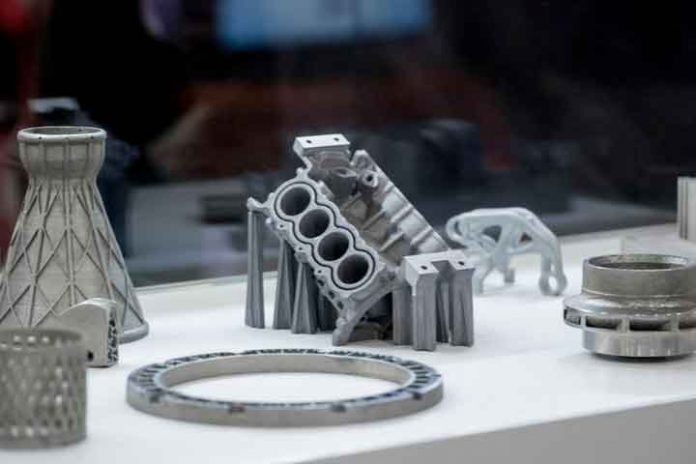By Pratik Kirve
Metals used in 3D printing have widened its application scope with the development of innovative technologies, methods, and usage. Market players adopted strategies such as collaborations and acquisition for expansion of portfolio and value addition. From development of innovative powdering solutions to utilization of different metals in development of complex parts through 3D printing, metals have come a long way from the inception of additive manufacturing technologies. Moreover, commercially pure metals have been utilized for different applications as the demand from various sectors increase considerably. Various metal parts and techniques are used for production of prosthetics, while some of are utilized for developing nuclear reactor parts with the help of 3D printers. The demand for different metals for 3D printing is expected rise significantly in the next few years. According to the report published by Allied Market Research, the global 3D printing metal market is estimated to reach $796.3 million by 2026. Following are some of the activities taking place across the world.
The development activities of powders for 3D printing metals are gaining momentum as companies collaborate. Desktop Metal joined hands with Uniformity Labs for developing aluminum 6061 powder for 3D printing. The binder jet powders with high mechanical properties and super-low porosity will help businesses in producing metal parts at ease on a large scale. Desktop’s binder jet printers will be utilized along with powder processing capabilities of Uniformity to develop an integrated solution. Both companies aim to advance additive manufacturing (AM) solutions and offer customers a solution for mass production.
Commenting on the collaboration and development of innovative powdering solution for 3D printing metal manufacturing, Adam Hopkins, the Founder, and CEO of Uniformity Labs, said that this solution is developed in collaboration with Desktop to offer next generation AM solutions. Moreover, these companies will aim for qualification of binder jet powders for Desktop’s metal 3D printers. In addition, they will launch print profiles for multiple metals such as stainless steel and copper.
Desktop Metal recently carried out qualification of commercially pure copper for 3D printing on its Production SystemTM platform. The company utilizes its Single Pass JettingTM (SPJ) technology for gaining the highest production speed and various industries such as aerospace, automotive, and electronics can utilize SPJ technology for mast production of copper parts. The commercially pure copper has an excellent electrical and thermal conductivity, so it is used majorly in heat or electricity transfer applications. The company was able to achieve 99.95 percent of purity for its commercially pure copper. Customers will be able to print copper parts of different geometry and complexity in a single step with its Production System technology instead of going through multiple steps. This offers cost-saving and time-saving benefits.
Jonah Myerberg, the Co-Founder and Chief Technology Officer at Desktop Metal, highlighted that the pure copper for 3D printing has been the highly demanded material from various industries. It has a wide application scope from thermal hardware in cooling systems to cooled coils for transmitting high frequency currents. The company plans to expand its existing portfolio for customers that are looking forward to 3D print electrically and thermally conductive components at large scale by replacing the traditional methods that consume time, cost high, and generate waste.
The innovative methods for 3D printing continue to develop as companies and government organizations adopt various strategies such as collaboration. The U.S. Department of Energy’s Oak Ridge National Laboratory (ORNL) collaborated with BWX Technologies and developed an innovative method for 3D printing of refractory metals with the help of electronic beam melting (EBM). In this method, metals such as rhenium, tungsten, and niobutin have been used for their capabilities to survive in the extremely high temperatures. Though they pose challenges in shaping themselves as per requirements, the additive manufacturing techniques have made it easier than before to utilize and shape these metals for applications such as nuclear power and nuclear rocket propulsion systems. In this collaboration, both companies 3D printed the parts with the help of refractory metal known as molybdenum.
The innovative 3D printing method of ORNL led the Ultra Safe Nuclear Corporation (USNC) to license the method and utilize it for printing nuclear reactor components through 3D printing. USNC will integrate the method in its manufacturing operations for 3D printing of the geometrically complex parts. Moreover, it will also utilize the expertise of ORNL to scale up the production of its parts and expand its operations.
Along with application of metals with 3D printing technology in industrial sectors, these metals can also be used for constructing artificial limbs. Researchers from the Indian Institute of Technology (IIT), Madras developed artificial limbs of metals, cement, and plastics with the help of 3D printing technology. Various types of metals have been fused together and prosthetic feet are designed. This process is less time-consuming and incurs lesser costs as compared to traditional methods. Moreover, the manpower invested in construction of such limbs is also lesser than that invested in traditional ways. Finite Element Analysis is utilized along with 3D printing technology. The material, geometric, and contact non-linearity of prosthetics is taken into consideration during the design phase. Then biomechanical characteristics such as ankle flexion moment (AFM), ankle range of motion (AROM), and others are taken into account for efficient designing and development. Once this technology is developed fully and tested, utilization of 3D printing technology and metals will add value and become the boon for physically handicapped people.
Along with strategies such as collaboration and innovation, there is another strategy that has been adopted by market players to offer their customers advanced solutions and gain competitive advantage. CORE Industrial Partners LLC carried out an acquisition of leading 3D printing service provider RE3DTECH. The 3D printing market player utilizes advanced technologies and techniques for producing metal materials at scale and serves various industries including automotive, aerospace and defense, technology, industrial, and others. CORE highlighted that this investment is another step taken to expand its portfolio within the additive manufacturing sector with rise in high-volume manufacturing needs. RE3DTECH outlined that the partnership with CORE will help in utilizing state-of-the-art technologies for addition value to their customers and develop cutting-edge technologies.
About the Author
Pratik Kirve is writer, blogger, and sport enthusiast. He holds a bachelor degree in Electronics and Telecommunication Engineering, and is currently working as a Team Lead – Content Writing at Allied Market Research. He has avid interest in writing news articles across different verticals. When he is not following updates and trends, he spends his time reading, writing poetry, and playing football. He can be reached at pratik.kirve@alliedmarketresearch.net



































